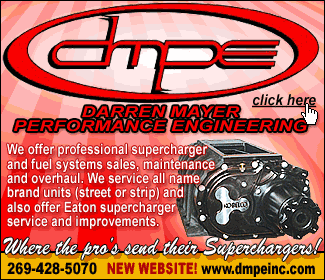
The average manual (non-power
boosted) master cylinder will
require somewhere between 600 to 1,000 PSI
to be totally
effective. Somehow you have to translate
the 100-150
pounds of leg force into 600-1,200 PSI.
The way
it's accomplished is by way of pedal ratio.
While changing the overall length of
the pedal is possible, it's usually
easier (and far more
practical) to shorten
the distance between
the pivot point
and the master
cylinder pushrod
mount location.
That's precisely
how MPR modifies
late model
brake pedals in
their power-to-manual
brake conversions. |
| The typical Detroit
pedal assembly looks like this. This vintage
Nova hanging arrangement is designed to
accept the brake pedal assembly, and if
equipped with a clutch, that too. In contrast,
most late model cars are designed with power
brakes and that can spell trouble when it
comes to pedal ratio. |
The average manual (non-power boosted) master
cylinder will require somewhere between 600
to 1,000 PSI to be totally effective. Somehow
you have to translate the 100-150 pounds of
leg force into 600-1,200 PSI. The way it's accomplished
is by way of pedal ratio. While changing the
overall length of the pedal is possible, it's
usually easier (and far more practical) to shorten
the distance between the pivot point and the
master cylinder pushrod mount location. That's
precisely how MPR modifies late model brake
pedals in their power-to-manual brake conversions.
So far, so good. Brake line pressure is a different
thing than the force you apply to the pedal.
Force acts in one direction and is addressed
in pounds. Pressure acts in all directions against
surrounding surfaces and is addressed in pounds
per square inch or PSI. "Levers" (brake pedals
as outlined above) can be used to change the
force. Inside the hydraulic system the surface
area of the piston is what is affected by pressure.
Decreasing the bore size of the master cylinder
will increase the pressure it can build. Pistons
in master cylinders are specified by bore size.
But there's a catch: The area of a circle (or
bore) is piŗr-squared. The area of the piston
surface increases or decreases with the square
of the bore size or diameter. The area of a
1-1/8-inch master cylinder is approximately
0.994-inch. The area of a 1.00-inch bore master
cylinder is approximately 0.785-inch. As a result,
switching from the larger master cylinder to
the smaller version will increase the line pressure
approximately 26.5 percent, assuming that pedal
ratio hasn't changed.
According to Mark Williams, the normal bore
size in a drag racecar where rear two or four
piston (1-3/4") brakes are used on something
like a dragster (no front brakes), is a single
7/8-inch master cylinder assembly. If a single
piston front design brake is used in conjunction
with a pair of four piston rear calipers, a
1.00-inch tandem master cylinder will
ADVERTISEMENT
 |
work.
In applications where four piston brakes are
used front and rear, a 1-1/8-inch bore tandem
master cylinder will work. Mark points out an
important factor with regard to master cylinders.
"Attachment to frame rails or the roll bar is
preferred to ensure a solid mount. Often times,
a spongy« brake can be attributed to master
cylinder deflection. Do not use the firewall
sheet metal as the sole mount". This is an interesting
point, especially in light of old racing articles
regarding the structural integrity of firewalls
(the "oil can syndrome"). Many experienced racers
and chassis builders have found the cause of
cracking in the area of the master cylinder
had absolutely nothing to do with the structural
integrity of the roll cage or the chassis. Instead,
it is the force of the driver's leg against
the brake pedal that creates the cracking. Good
examples of this include many vintage cars with
manual (non-boosted) brakes that have never
been modified. The sheet metal surrounding the
master cylinder eventually fatigues in these
cars, even though they were never modified (meanwhile,
similar un-modified cars with power brakes seldom
have evidence of firewall fatigue). That's why
sharp door car chassis builders routinely brace
the master cylinder to the roll cage (or the
forward engine compartment hoop).

|